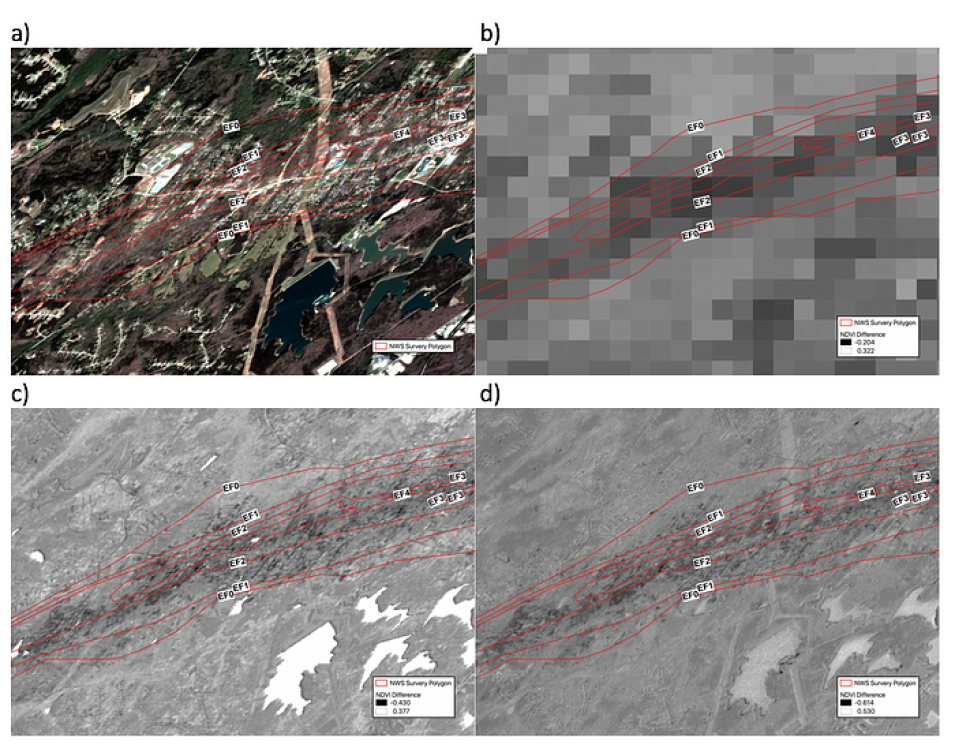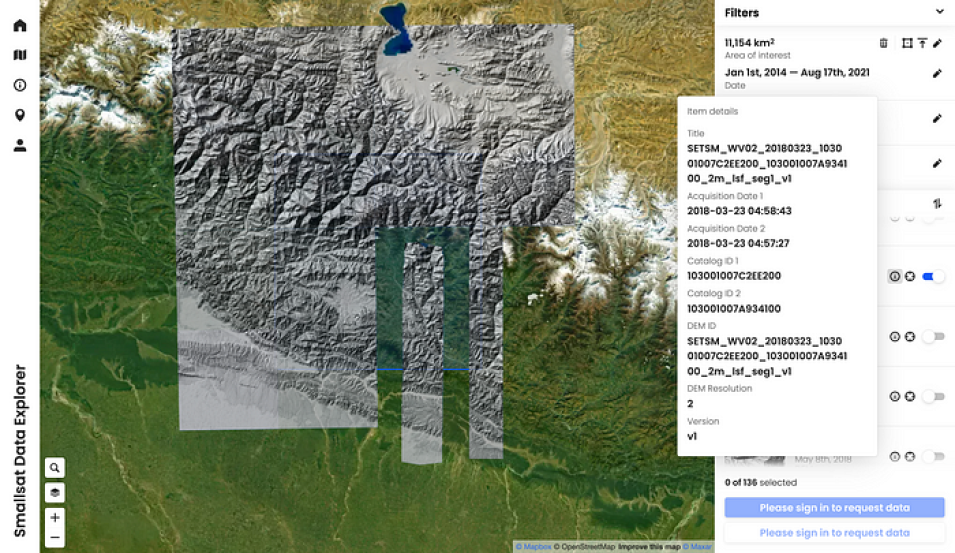Coming up quickly in the new year is the American Meteorological Society’s 2022 Annual Meeting on January 23rd. Two IMPACT team members who are part of the Commercial SmallSat Data Acquisition (CSDA) program will be presenting several of the research and projects focused on small satellite imagery data.
Brad Baker will be presenting “Tornado Path Detection Using High-Resolution SmallSat Imagery Data” that demonstrates the use of the normalized difference vegetation index (NDVI) from high resolution commercial imagery to identify tornado damage paths. NDVI is a calculated indicator that provides a baseline for vegetation health by measuring the absorption and reflection of near infrared and red light by plants. Tornadoes can disturb vegetation, and the use of NDVI can potentially detect this disturbance to surface vegetation. This research used PlanetScope imagery to evaluate several tornado events across a range of locations, seasons, and Enhanced Fujita scale tornado intensities. NDVI was calculated using imagery obtained approximately one month or less prior to the event and also from the days following the tornado. NDVI values, calculated using both the before and after images were then differenced to identify the tornado damage paths. This analysis was repeated using three other satellite imagery datasets, MODIS Terra, Landsat 8, and Sentinel-2 which all have lower spatial resolution than the PlanetScope imagery. The results from this analysis show promise for using commercial high-resolution data in the detection of tornado damage paths. Catch this talk on January 27th at 9:30 AM.

